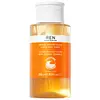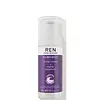What's inside
What's inside
 Key Ingredients
Key Ingredients

 Benefits
Benefits

 Concerns
Concerns

 Ingredients Side-by-side
Ingredients Side-by-side

Water
Skin ConditioningSodium Lactate
BufferingLactic Acid
BufferingHeptyl Glucoside
Potassium Azeloyl Diglycinate
Skin ConditioningTriethyl Citrate
MaskingGlyceryl Caprylate
EmollientSalix Nigra Bark Extract
Skin ProtectingBenzoic Acid
MaskingCitrus Nobilis Peel Oil
MaskingCitrus Aurantium Dulcis Flower Oil
AstringentCitrus Grandis Peel Oil
MaskingCitrus Tangerina Peel Oil
MaskingHeptanol
PerfumingParfum
MaskingLimonene
PerfumingWater, Sodium Lactate, Lactic Acid, Heptyl Glucoside, Potassium Azeloyl Diglycinate, Triethyl Citrate, Glyceryl Caprylate, Salix Nigra Bark Extract, Benzoic Acid, Citrus Nobilis Peel Oil, Citrus Aurantium Dulcis Flower Oil, Citrus Grandis Peel Oil, Citrus Tangerina Peel Oil, Heptanol, Parfum, Limonene
Water
Skin ConditioningCetearyl Alcohol
EmollientRosa Canina Fruit Oil
EmollientGlycerin
HumectantCaprylic/Capric Triglyceride
MaskingOleyl Alcohol
EmollientMyristyl Myristate
EmollientOryza Sativa Bran Oil
EmollientElaeis Guineensis Oil
EmollientLauryl Laurate
Skin ConditioningTriheptanoin
Skin ConditioningCetearyl Glucoside
EmulsifyingGossypium Herbaceum Seed Oil
Skin ConditioningDipalmitoyl Hydroxyproline
Skin ConditioningOryza Sativa Germ Oil
EmollientBidens Pilosa Extract
HumectantHydroxypropyl Methylcellulose
Emulsion StabilisingHydroxyacetophenone
AntioxidantOryzanol
Skin ConditioningLinum Usitatissimum Seed Oil
PerfumingPhenoxyethanol
PreservativePullulan
Myristyl Laurate
Parfum
MaskingPalmitic Acid
EmollientKappaphycus Alvarezii Extract
Skin ConditioningTocopherol
AntioxidantSodium Hyaluronate
HumectantSodium Sulfite
PreservativeXanthan Gum
EmulsifyingDecyl Glucoside
CleansingFructan
Skin ConditioningOlea Europaea Leaf Extract
PerfumingRosa Damascena Extract
MaskingLactic Acid
BufferingPorphyridium Cruentum Extract
Skin ConditioningHelianthus Annuus Seed Oil
EmollientAscorbic Acid
AntioxidantCitric Acid
BufferingPhenethyl Alcohol
MaskingZiziphus Jujuba Seed Extract
Skin ConditioningGlucose
HumectantLinalool
PerfumingCitronellol
PerfumingSodium Hydroxide
BufferingGeraniol
PerfumingEthylhexylglycerin
Skin ConditioningBenzyl Alcohol
PerfumingBeta-Carotene
Skin ConditioningDaucus Carota Sativa Root Extract
Skin ConditioningDaucus Carota Sativa Seed Oil
EmollientAscorbyl Palmitate
AntioxidantWater, Cetearyl Alcohol, Rosa Canina Fruit Oil, Glycerin, Caprylic/Capric Triglyceride, Oleyl Alcohol, Myristyl Myristate, Oryza Sativa Bran Oil, Elaeis Guineensis Oil, Lauryl Laurate, Triheptanoin, Cetearyl Glucoside, Gossypium Herbaceum Seed Oil, Dipalmitoyl Hydroxyproline, Oryza Sativa Germ Oil, Bidens Pilosa Extract, Hydroxypropyl Methylcellulose, Hydroxyacetophenone, Oryzanol, Linum Usitatissimum Seed Oil, Phenoxyethanol, Pullulan, Myristyl Laurate, Parfum, Palmitic Acid, Kappaphycus Alvarezii Extract, Tocopherol, Sodium Hyaluronate, Sodium Sulfite, Xanthan Gum, Decyl Glucoside, Fructan, Olea Europaea Leaf Extract, Rosa Damascena Extract, Lactic Acid, Porphyridium Cruentum Extract, Helianthus Annuus Seed Oil, Ascorbic Acid, Citric Acid, Phenethyl Alcohol, Ziziphus Jujuba Seed Extract, Glucose, Linalool, Citronellol, Sodium Hydroxide, Geraniol, Ethylhexylglycerin, Benzyl Alcohol, Beta-Carotene, Daucus Carota Sativa Root Extract, Daucus Carota Sativa Seed Oil, Ascorbyl Palmitate
 Reviews
Reviews

Alternatives
Ingredients Explained
These ingredients are found in both products.
Ingredients higher up in an ingredient list are typically present in a larger amount.
Lactic Acid is another well-loved alpha hydroxy acid (AHA). It is gentler than glycolic acid but still highly effective.
Its main role is to exfoliate the surface of the skin by loosening the “glue” that holds dead skin cells together. Shedding those old cells leads to smoother, softer, and more even-toned skin.
Because lactic acid molecules are larger than glycolic acid, they don’t penetrate as deeply. This means they’re less likely to sting or irritate, making it a great choice for beginners or those with sensitive skin.
Like glycolic acid, it can:
Lactic acid also acts as a humectant (like hyaluronic acid). It can draw water into the skin to improve hydration and also plays a role in the skin's natural moisturizing factor (NMF) in the form of sodium lactate.
Studies show it can boost ceramide production to strengthen the skin barrier and even help balance the skin’s microbiome.
To get results, choose products with a pH between 3-4.
Lower strengths (5-12%) focus on surface exfoliation; higher strengths (12% and up) can reach deeper in the dermis (deeper, supportive layer) to improve skin texture and firmness over time.
Though it was originally derived from milk, most modern lactic acid used in skincare is vegan. It is made through non-dairy fermentation to create a bio-identical and stable form suitable for all formulations.
When lactic acid shows up near the end of an ingredient list, it usually means the brand added just a tiny amount to adjust the product’s pH.
Legend has it that Cleopatra used to bathe in sour milk to help reduce wrinkles.
Lactic acid is truly a gentle multitasker: it exfoliates, hydrates, strengthens, and brightens. It's a great ingredient for giving your skin a smooth, glowing, and healthy look without the harshness of stronger acids.
Read more about some other popular AHA's here:
Learn more about Lactic AcidParfum is a catch-all term for an ingredient or more that is used to give a scent to products.
Also called "fragrance", this ingredient can be a blend of hundreds of chemicals or plant oils. This means every product with "fragrance" or "parfum" in the ingredients list is a different mixture.
For instance, Habanolide is a proprietary trade name for a specific aroma chemical. When used as a fragrance ingredient in cosmetics, most aroma chemicals fall under the broad labeling category of “FRAGRANCE” or “PARFUM” according to EU and US regulations.
The term 'parfum' or 'fragrance' is not regulated in many countries. In many cases, it is up to the brand to define this term.
For instance, many brands choose to label themselves as "fragrance-free" because they are not using synthetic fragrances. However, their products may still contain ingredients such as essential oils that are considered a fragrance by INCI standards.
One example is Calendula flower extract. Calendula is an essential oil that still imparts a scent or 'fragrance'.
Depending on the blend, the ingredients in the mixture can cause allergies and sensitivities on the skin. Some ingredients that are known EU allergens include linalool and citronellol.
Parfum can also be used to mask or cover an unpleasant scent.
The bottom line is: not all fragrances/parfum/ingredients are created equally. If you are worried about fragrances, we recommend taking a closer look at an ingredient. And of course, we always recommend speaking with a professional.
Learn more about ParfumWater. It's the most common cosmetic ingredient of all. You'll usually see it at the top of ingredient lists, meaning that it makes up the largest part of the product.
So why is it so popular? Water most often acts as a solvent - this means that it helps dissolve other ingredients into the formulation.
You'll also recognize water as that liquid we all need to stay alive. If you see this, drink a glass of water. Stay hydrated!
Learn more about Water